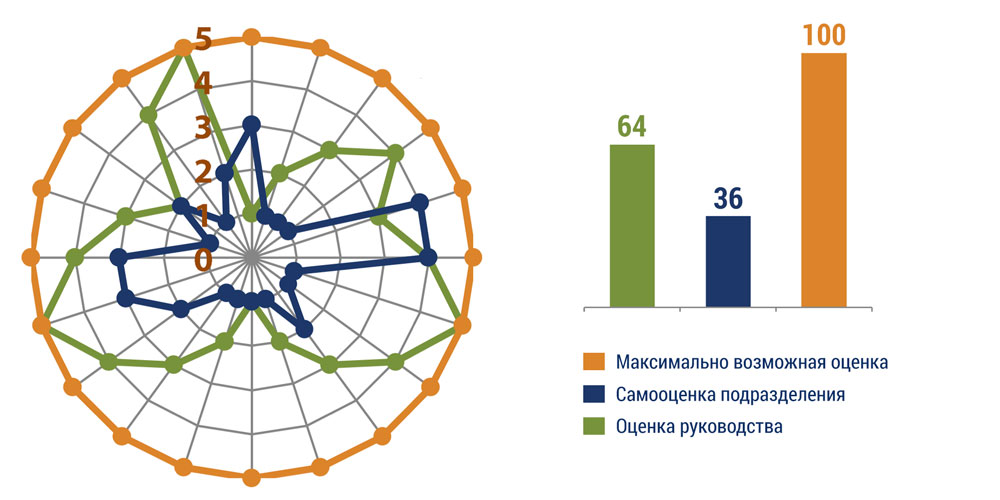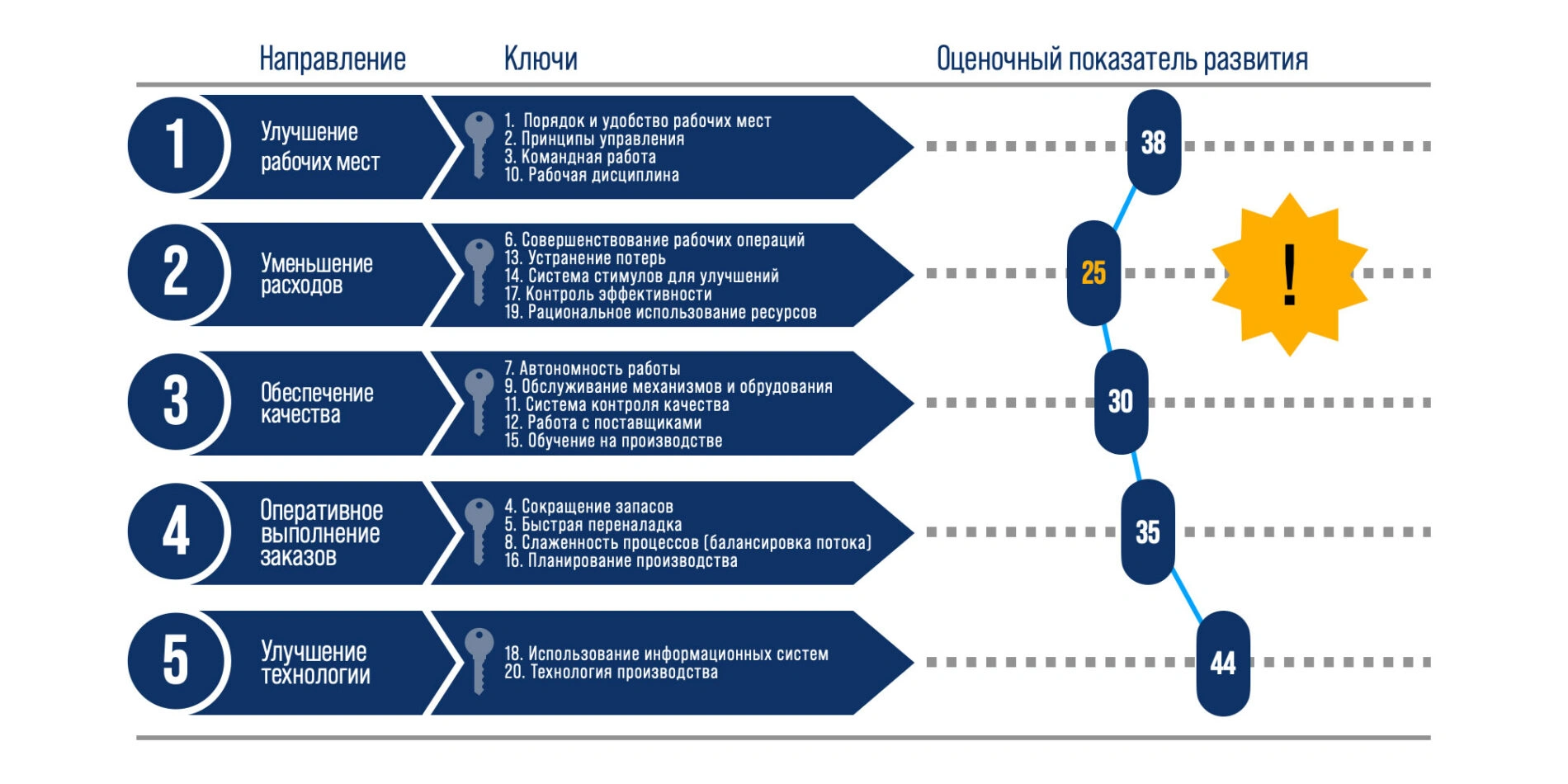What are we evaluating and for what purpose?
The production system audit assesses the current state of how the work is built at the moment in terms of efficiency and coherence of production processes and communications. It is necessary in order to:
Evaluate the level of development of the production system
Set priorities for development
Develop an effective strategy
Determine priority actions
Choose techniques and tools
The audit clearly indicates a “starting point” in order to judge how effective all subsequent actions of further stages of transformation will be.
The 20 Keys Methodology
We use a universal method to audit a production system which is applicable to any production or service organization. This will determine how well developed production is at the moment and what its potential is in principle. The audit will also highlight priority areas of development, where a quick tangible positive effect is possible with minimal effort and cost. The evaluation is made according to several criteria simultaneously and is performed according to the “20 keys” evaluation methodology developed by Japanese professor Iwao Kobayashi in 1982.
To find out more about each key for the development of the production system, how they are evaluated, their interrelationships and common goals, and what steps are being taken, read here.
Types of audit
To get a comprehensive assessment, audits are performed on checklists by department managers, management of the organization and experts:
- unit self-assessment,
- management’s self-assessment,
- expert evaluation of the production system.
Audit result
The final report on the audit of the production system contains three sections: directional and integral assessment, priority areas for development and recommendations for improvement.
Quantitative assessment for each unit and the organization as a whole will be performed on a 5-point scale. A comparison of self-assessment results from different levels will make it possible to identify problematic, so-called “blind spots,” where the assessment of management and line managers diverges. Together with the expert evaluation, this will give integral indications and allow to highlight priority areas.
Since the activities of the areas are related, improvements in the priority areas will lead to an improvement in related areas, and as a consequence, an increase in the comprehensive assessment of the production system. We will carry out the prioritization on the basis of the condition : Tangible and rapid positive effect with maximum use of available resources .
As a result, you will receive our recommendations, indicating what and how to do to make the necessary changes at the initial stage. These recommendations can form the basis for shaping the future operating strategy
A manufacturing system audit is part of our comprehensive service for Creating Lean Manufacturing
Interested in a production audit?
Let us know your contact information and briefly describe the production audit to be performed. Also, specify in the text of the message the time and date when it is convenient for you to discuss the details. Our specialist will call you.



